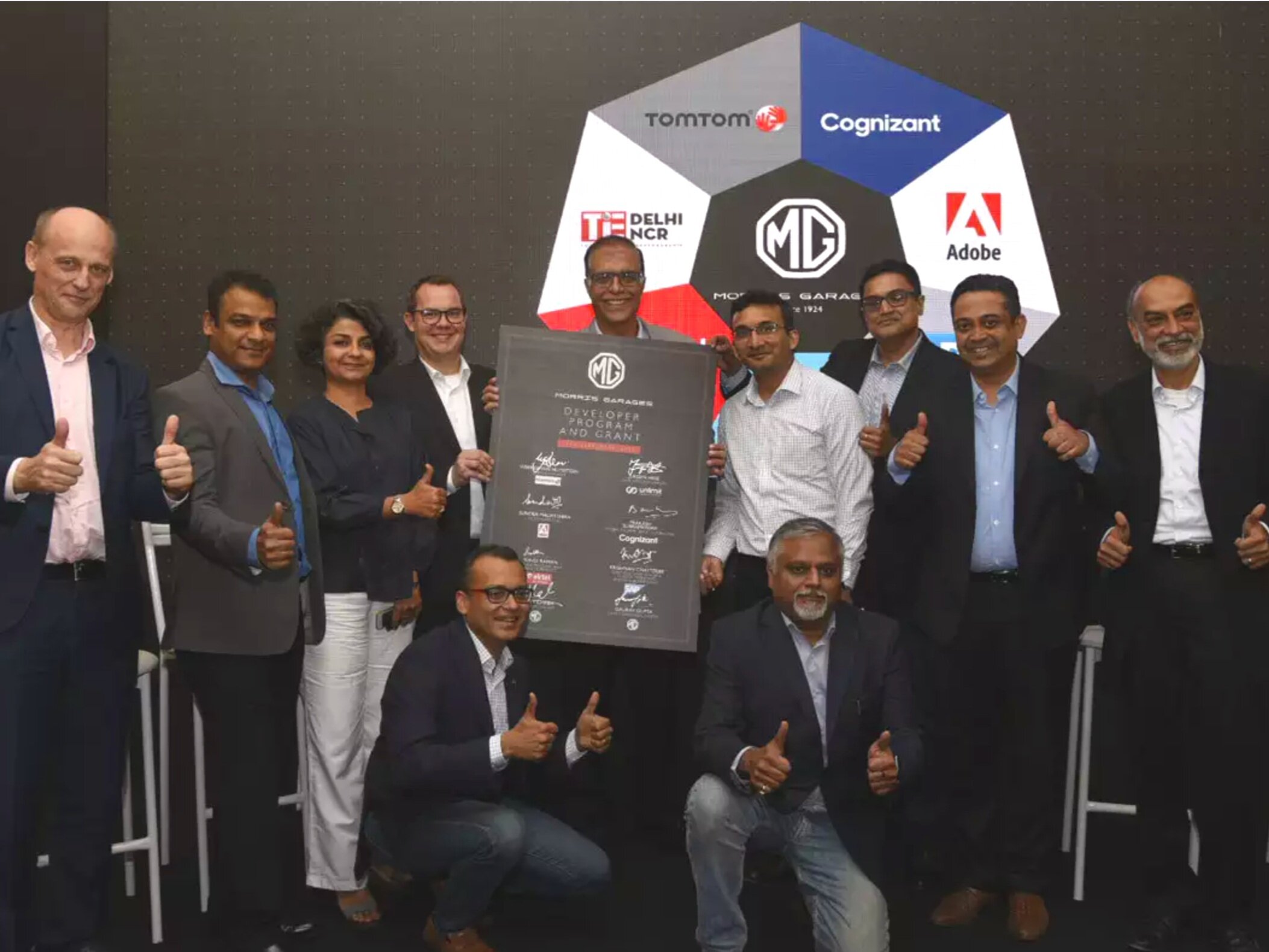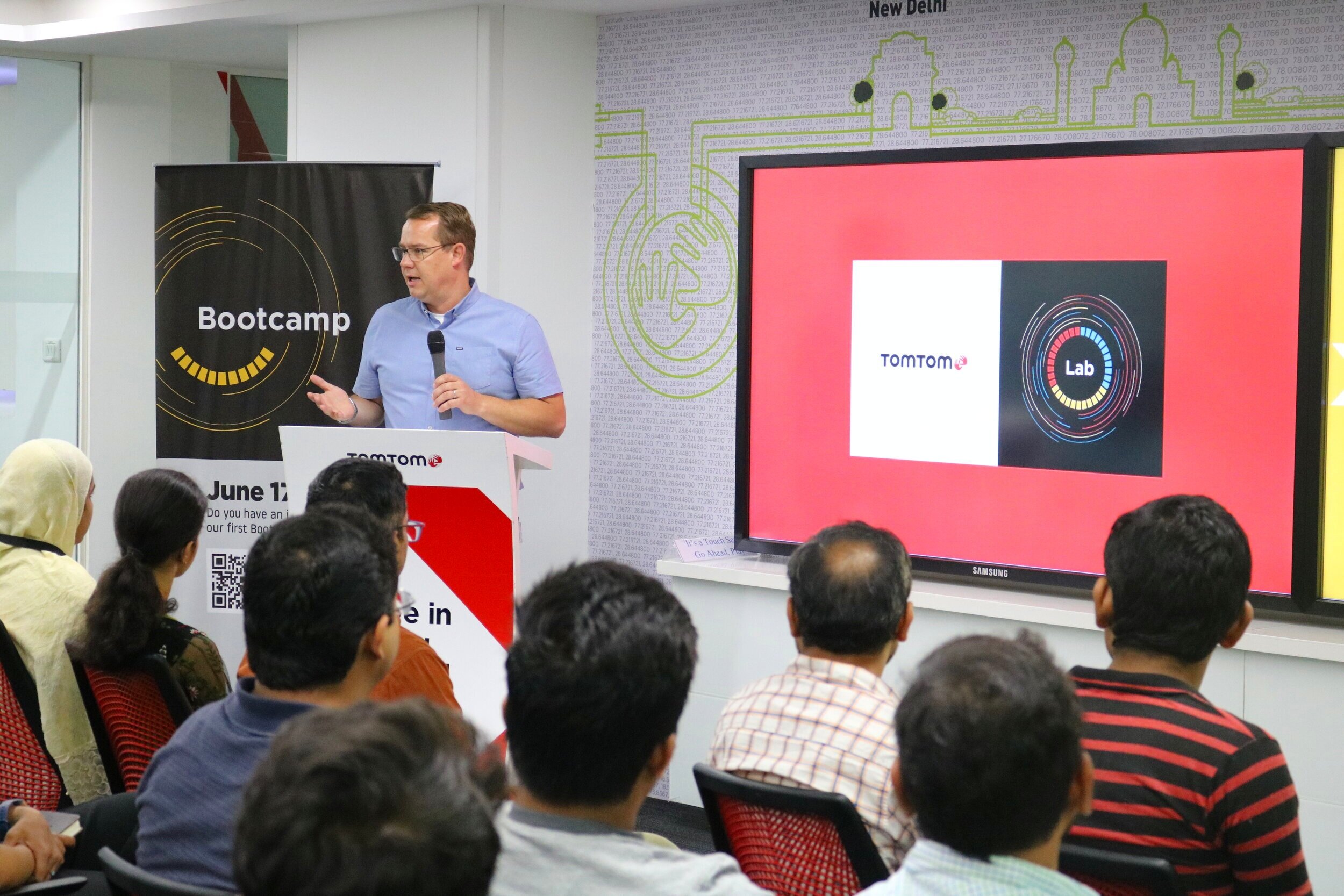TomTom may seem a little less visible in recent years, but it is still one of the largest digital map makers in the world. With clients such as Apple and Uber, we use TomTom's technology products every day. "The maps and associated technology are developed by our Indian developers in Pune, almost a quarter of TomTom's global workforce," says General Manager in India, Werner van Huyssteen. "It is our flagship site when it comes to development and therefore one of our most important parts."
MG bought TomTom's smart technology for its first, Indian-made connected car: the MG Hector
Seven years after TomTom was founded in 1991, the company took its first steps into the Indian market through a joint venture with TeleAtlas India. A company of Dutch origin that specialized in geographical databases and designed the first digital maps for TomTom. According to van Huyssen's predecessor Barbara Belpaire, this was not only to tap into the enormous potential of talent in the country, but TomTom also had to establish itself in India to be able to develop a world map. Indeed, a digital map of India may not be developed outside India.
'The talent of our staff in India elevates our product to world class'
In 2011 TomTom buys out partner TeleAtlas and TomTom India is founded. "Originally the move to India was mainly a practical one, Indian regulations forced us in this direction," van Huyssteen explains. "In the meantime, the office in Pune has become one of TomTom's most important development centers worldwide. Partly because this country is a breeding ground for talent. Almost all major map developers and tech companies are in India for that reason. This is where you find the development talent that elevates your product to world class."
Despite stiff competition, TomTom easily manages to snatch talent from under the noses of the big tech giants. "That's down to a number of things," the GM explains. "We produce exceptional products, so the work we offer is creative and challenging. In addition, our corporate culture is set up according to the European model. No Indian hierarchy, as few managers as possible and communication is as open as possible. For example, in the beginning we noticed that during meetings, where we as managers were present, few questions were asked. Therefore, we created a new kind of virtual meeting in which we, as management, answer questions that our employees submit in advance. There are often so many that we send out a special mailing afterwards with all the answers."
'Our network is important for finding staff'
That open culture is also one of the reasons TomTom has been able to keep turnover within the Indian branch low in recent years. "But that alone is not enough. The young generation in India is very ambitious and wants to work abroad. We therefore offer them the opportunity to gain experience in one of our European or American offices for a period of time. In this way they learn important skills for us as a company and still gain international experience without having to leave permanently." In addition, according to Van Huyssteen, the location has proven to be a huge advantage. "There are good technical universities to be found in the Pune area, so local talent is plentiful. But talent from outside the city is also more than willing to come this way. Not only because we offer a competitive salary, but in Pune, in addition to a challenging job, they get a pleasant place to live with lots of greenery, clean air and no endless morning rush hour."
"Our most important tip for finding and keeping good staff is to lean on your network. We see more and more applications coming in from friends and acquaintances of our employees," says Van Huyssteen. "They have gotten to know our value and company culture through the grapevine and are attracted to us. They really choose us, our way of working, and not just the experience of working for a multinational. Also striking is the number of applicants who come to us organically, without a recommendation from someone they know. That says something about our reputation as an employer."
General Manager Werner van Huyssteen during an innovation bootcamp in the TomTom Lab
Partnerships are essential in India
The products produced in India for TomTom hardly reach the Indian market. "India has made a leap in the last few years with which it skipped a lot of steps and went straight into the smartphone era. Therefore, we don't make specific products for India, but actually we don't make products for other countries either. Our main product is our global map and that is for the whole world." However, TomTom is part of special products for India through partnerships, such as the MG Hector. The first connected car that MG Motors designed specifically for the Indian and Asian markets. "MG buys our full range of products for such a car, but the maps of the region in which the car is sold are additionally enriched with local data."
TomTom makes more than just maps. "We provide a lot of different services such as location services, insight into traffic through our traffic index and technology for self-driving cars," Van Huyssteen gives as an example. "In addition to partnerships with companies, this also leads to government contracts, such as our collaboration with the municipality of Pune. We have a TomTom traffic center here where we translate all traffic data into actionable insights that can help city planners and residents make smarter choices and reduce the number of traffic jams in the city. Indian commuters, for example, see our traffic information passing by on large screens along the roads."
Thinking Big
Van Huyssteen expects these smart traffic developments to continue under India's smart cities plan. "You see in India a great interest and need for sustainable solutions like electric driving and ride-sharing. Through the smart city initiative, these solutions can be implemented more easily and that is going to change a lot for India, such as better controlled traffic. There are very interesting opportunities in the country right now for companies like TomTom that offer such solutions. That was very different a few years ago."
For Van Huyssteen, one of the most interesting personal lessons from his first year in India was the Indian mentality of being able to implement major change in a short period of time. "I learned from Indians how to deal with crisis situations. This country and these people are so resilient. You can see that not only now during the corona crisis, but also, for example, nine months ago when we had severe floods in Pune. The flexibility with which this was handled and the creative solutions that people came up with were extraordinary to see. Indians dare to think big."


